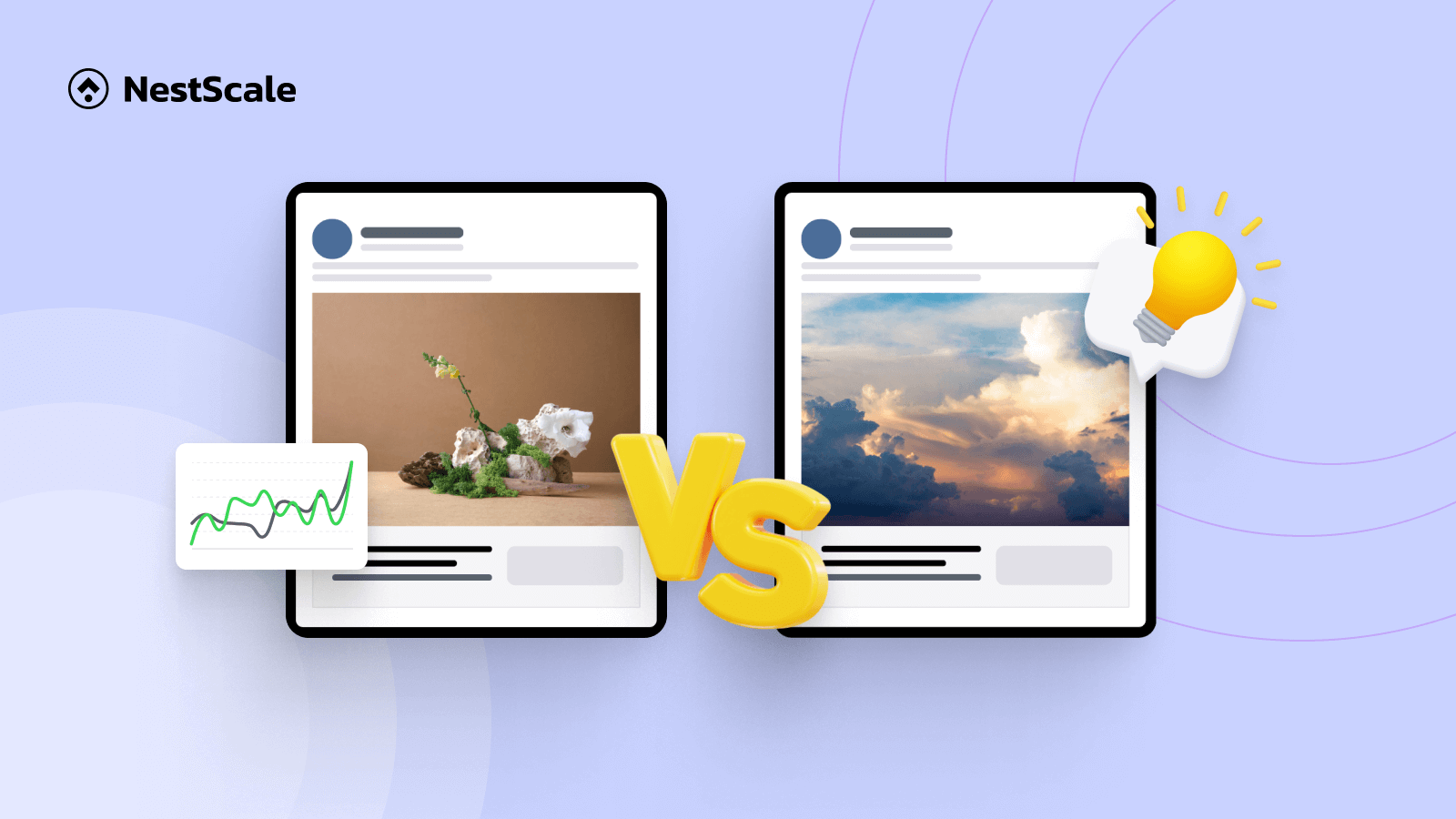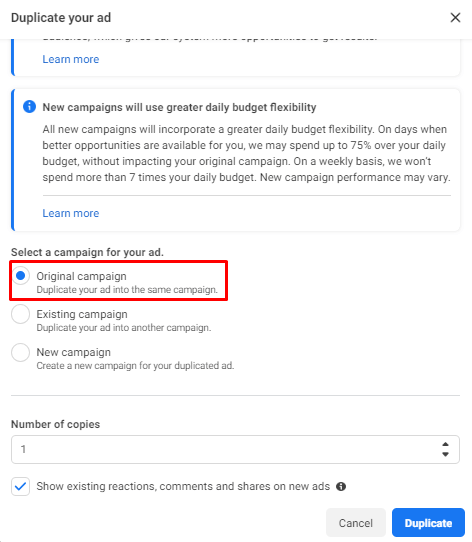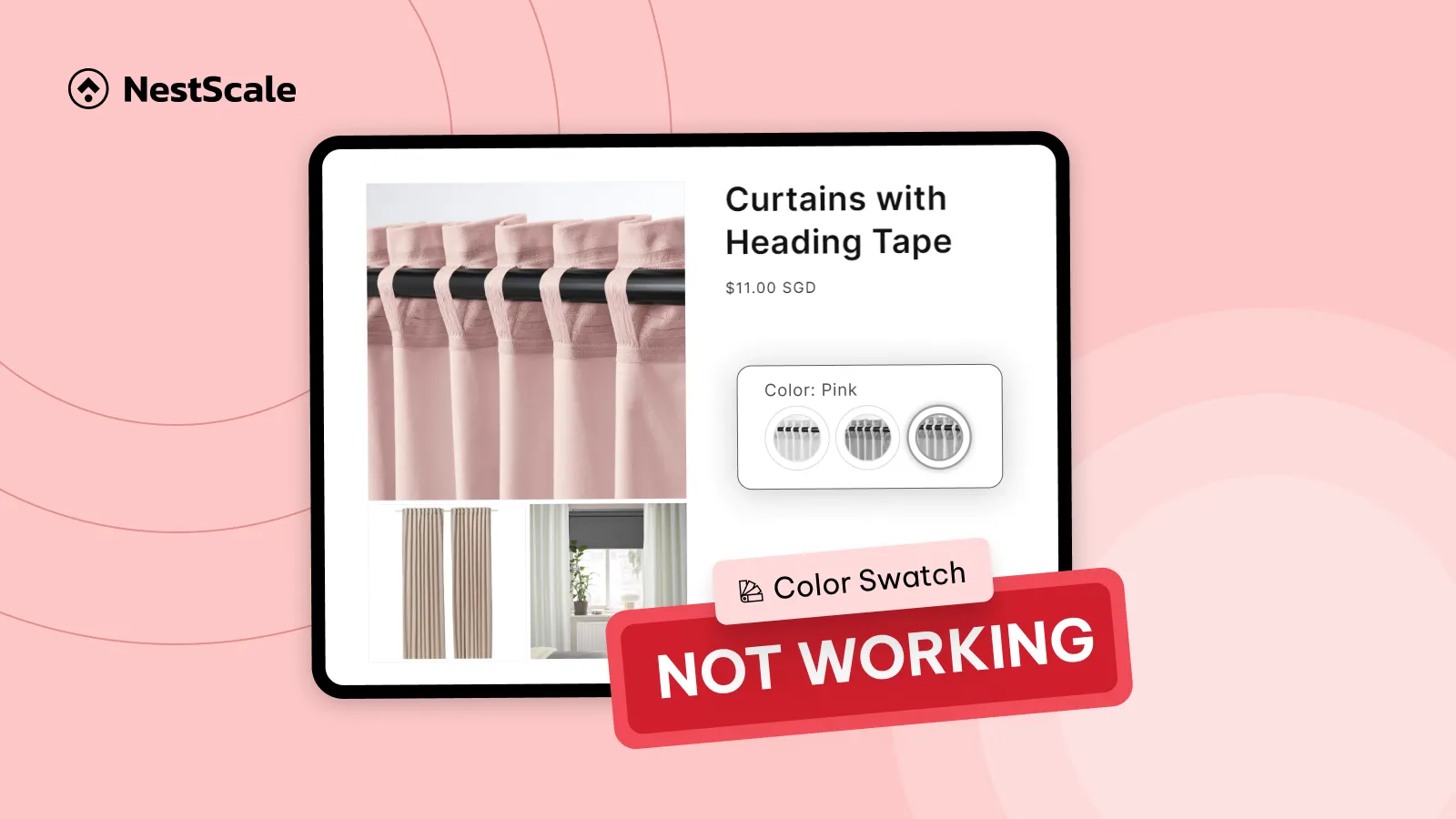When it comes to optimizing Facebook ads, A/B testing is one of the most powerful tools at your disposal. It allows you to experiment with different elements of your ads to determine what resonates best with your audience. This blog will dive deep into what A/B testing is, why and when you should use it, and how to set it up effectively. We’ll also provide tips to ensure you get the most out of your A/B tests. Let’s get started!
What is A/B testing in Facebook ads?
A/B testing (or split testing) is a method where you compare two versions of an ad to determine which one performs better. It might sound similar to regular ad comparisons, but there’s a key difference: in A/B testing, the ads you compare have only one variable changed, while everything else remains the same.
For example, you can compare your ad captions to see which one engages your customers better. To do this, you have to keep the creative, headlines, and CTA the same, and change only the caption. By running these tests, you can gather data on what works best and refine your advertising strategy to achieve optimal results.
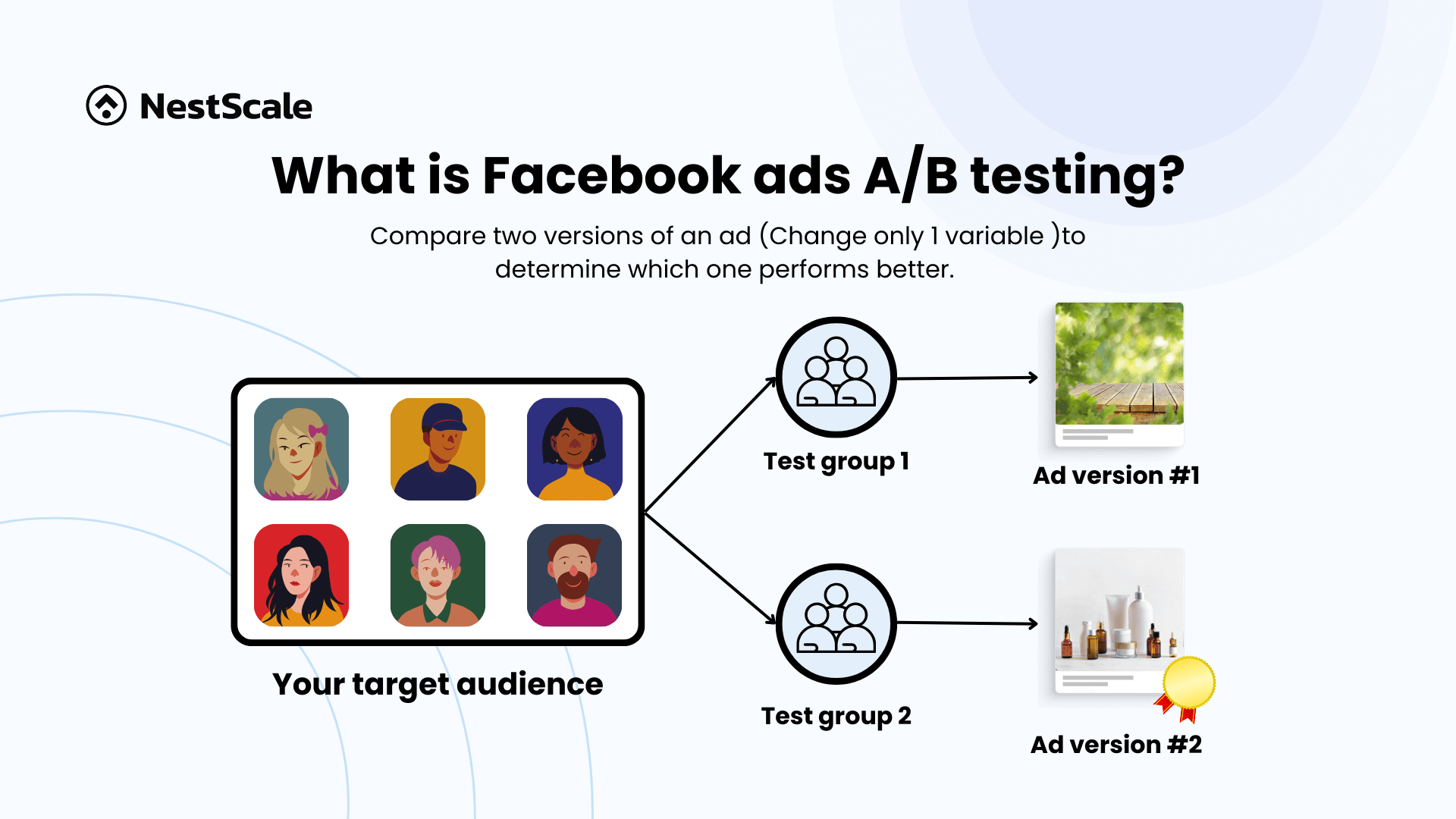
Why you should run A/B for your Facebook Ads?
Running A/B tests for your Facebook ads can provide several significant benefits:
- Data-driven decisions: Rather than relying on guesswork or intuition, A/B testing provides concrete data on what works and what doesn’t.
- Improved ad performance: By continuously testing and refining your ads, you can significantly improve your click-through rates, conversion rates, and overall return on ad spend (ROAS).
- Cost efficiency: A/B testing helps you identify the most effective ad elements, reducing wasted spend on underperforming ads.
- Understanding your audience: It gives you deeper insights into your audience’s preferences and behaviors, allowing you to tailor your ads more effectively.
When you should run A/B for your Facebook Ads
Most of the time, people think that you can only A/B test the visible elements of your ads, such as the creative, caption, and CTA. However, A/B testing can be applied to much more than just these elements.
You can measure the effectiveness of changes within your ads or compare even two different advertising strategies. As long as you keep everything else the same, you can test almost any factors you want relating to your ads. However, here are some cases where we think that A/B testing will work wonders for you:
- Test new creatives: Whenever you develop new ad creatives, running A/B tests ensures that you’re using the most impactful versions. You can test different creative formats, headlines, or CTAs to see which one performs best.
- Target new audiences: If you’re exploring new audience segments, A/B testing can help determine how to engage them best. This allows you to see who’s more likely to engage with your ads or buy your products.
- Optimize delivery strategy: Test different delivery strategies to see which one leads to better results. Some aspects you can test include budget optimization (ABO vs. CBO) or campaign objectives.
- Test different ad placements: Test different placements across platforms and devices to see which one reaches or converts customers better for you.
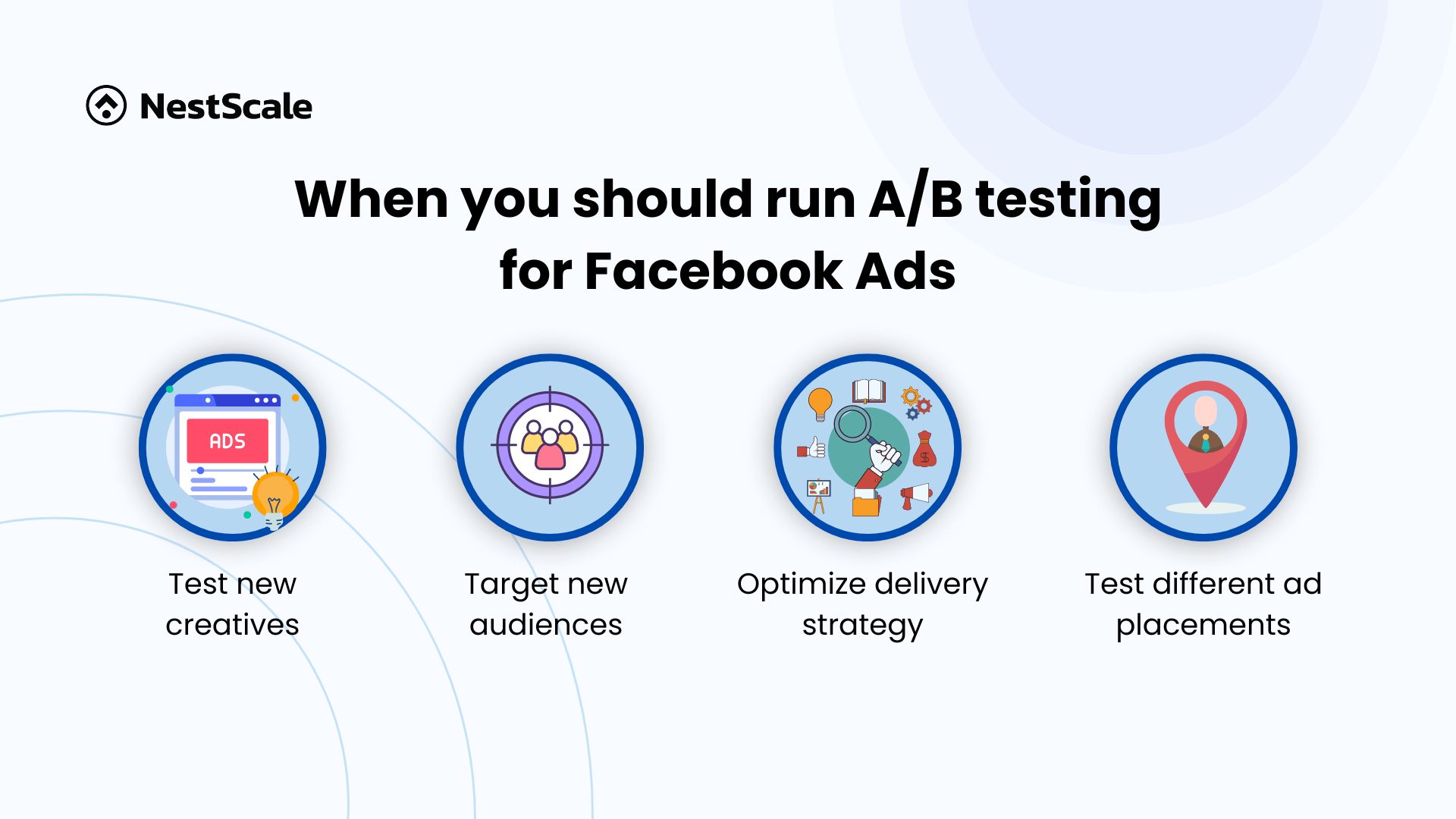
How to A/B test your Facebook ads
For A/B testing in Facebook ads, there are two methods you can use: Manually duplicating ads or using the A/B test feature in Meta Ads Manager. Each method has its own advantages and disadvantages. Depending on your testing needs, you might choose one over the other for different situations.
| Manual A/B testing | Using A/B test tool | |
|---|---|---|
| How to | – Duplicate your current ads and change their variables for comparison | – Utilize the available A/B testing tool provided by Meta Ads Manager |
| Advantages | – Greater control over your results – Easier for simple testing |
– Simple setup – Clearer reporting from Facebook |
| Disadvantages | – Need constant tracking and monitoring for results – Might be prone to errors – Might consume more of your budget |
– Less control over budget allocation – Limited to certain variables – Limits running tests to only a period of time. Therefore, if your ads perform well during the test, you still can’t continue running them |
| When to use | – When you want full control of your testing results – When you have your own criteria for determining which ads are winning |
– When you’ve already had ads that perform relatively well and want to test them |
Now, let us guide you through a step-by-step process on how to implement A/B testing on Facebook Ads using two methods.
Method 1: Manually setup through duplicating ads
1. Firstly, in your Meta Ads Manager, select the ad you want to create an A/B test for. Then, click on Duplicate. You can choose to duplicate any campaign, ad set, or ad you want. In this example, we will duplicate an ad.
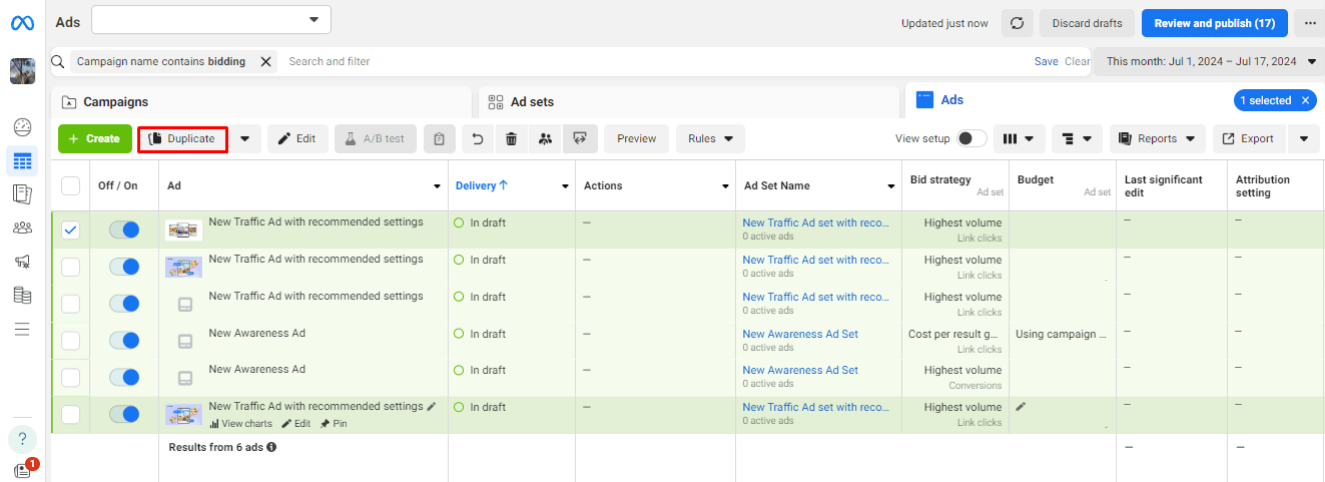
2. Select the original campaign to ensure that both ads are within the same campaign.
3. Edit one variable within the ad that you want to test.
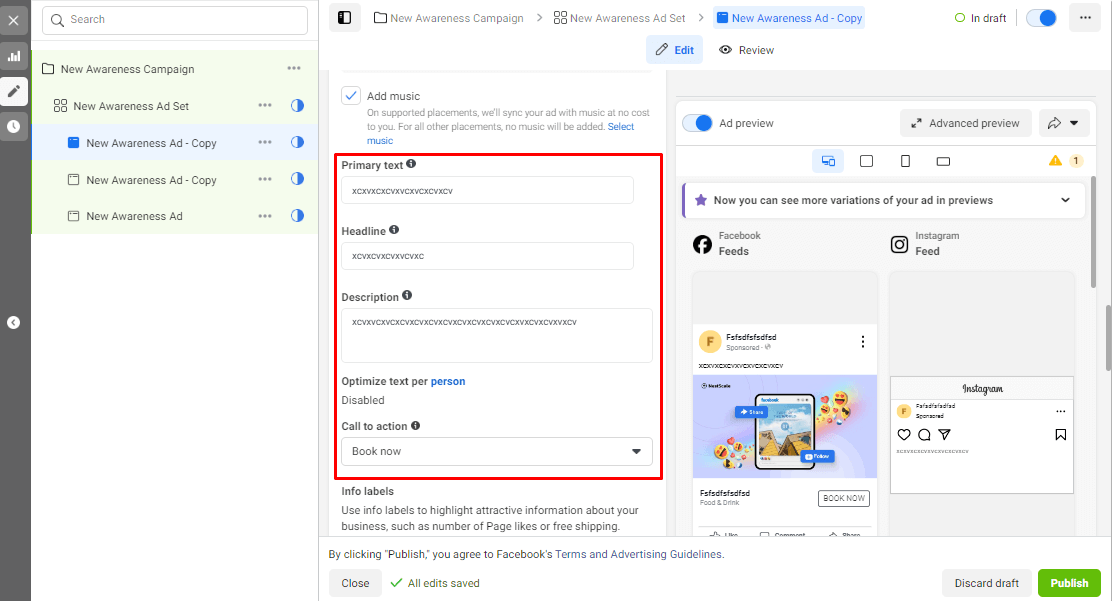
4. Lastly, go back to your Meta Ads Manager. Select the ads you’re going to test, then click on Review and Publish.

Method 2: Use the A/B test tool provided by Facebook
1. In your Ads Manager dashboard, click on A/B Test.

2. Depending on your needs, choose how you want to set up your test. Please keep in mind that you can only do an A/B test for ads that have already been published.
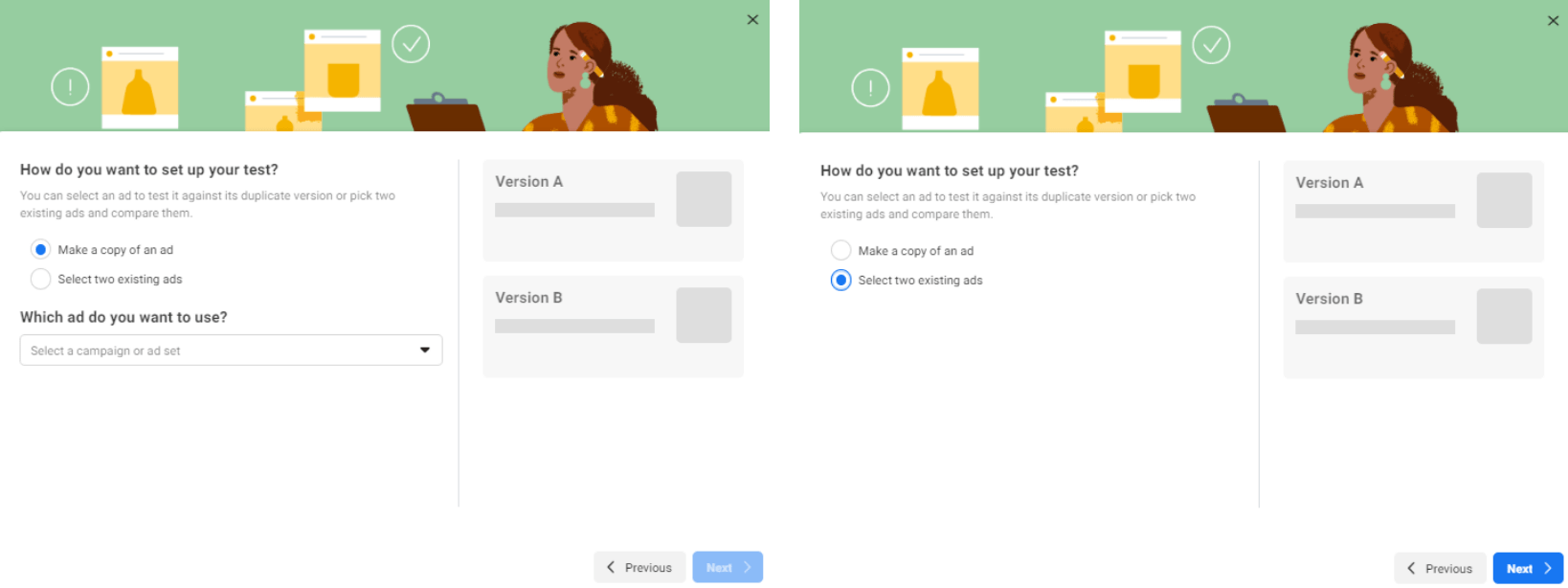
3. Lastly, determine your winning ad by setting the criteria you need to achieve, including the key metrics you want to measure.
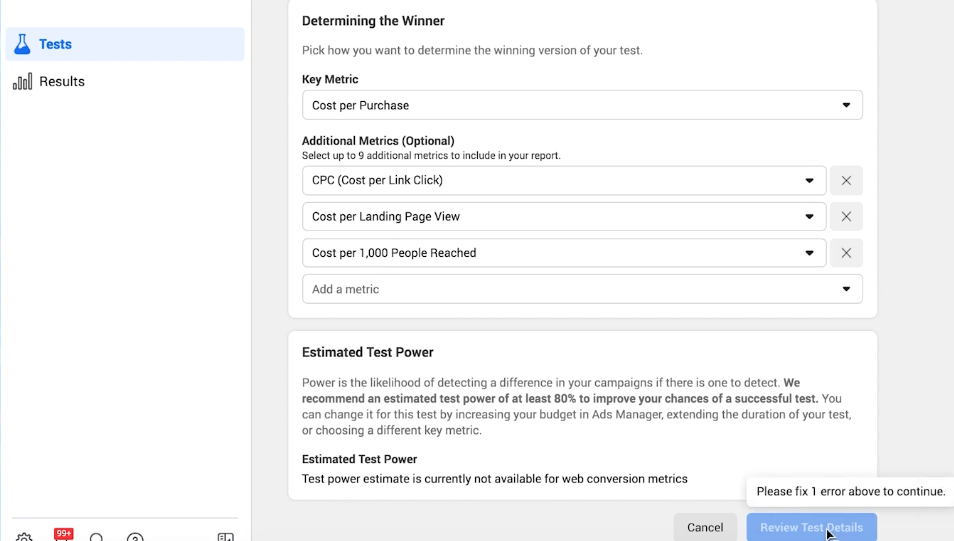
Best practices for setting up A/B testing
To ensure your A/B tests are effective, here are some practices (Based on our experience and recommendations from experts) you should follow:
Choose the right variable for more effective testing
When conducting A/B testing, it’s crucial to test only one variable at a time. This practice ensures that any differences in performance can be directly attributed to that specific change, making your results more reliable and actionable. Testing multiple variables simultaneously can lead to longer, more expensive tests that might not provide clear or useful insights. By focusing on a single variable, you simplify the analysis and gain valuable insights into what works.
As mentioned before, making data-driven decisions to determine which elements to test is essential. Testing consumes significant resources, so it’s important to analyze your ads down to the creative level to gain comprehensive insights. We recommend using the NestAds Creative Report. This feature allows you to examine your ads at the creative level, see how they are performing, and gain core metrics and customer journey insights, all within your Shopify store dashboard. This tool will help you enhance your A/B testing and make it more effective.
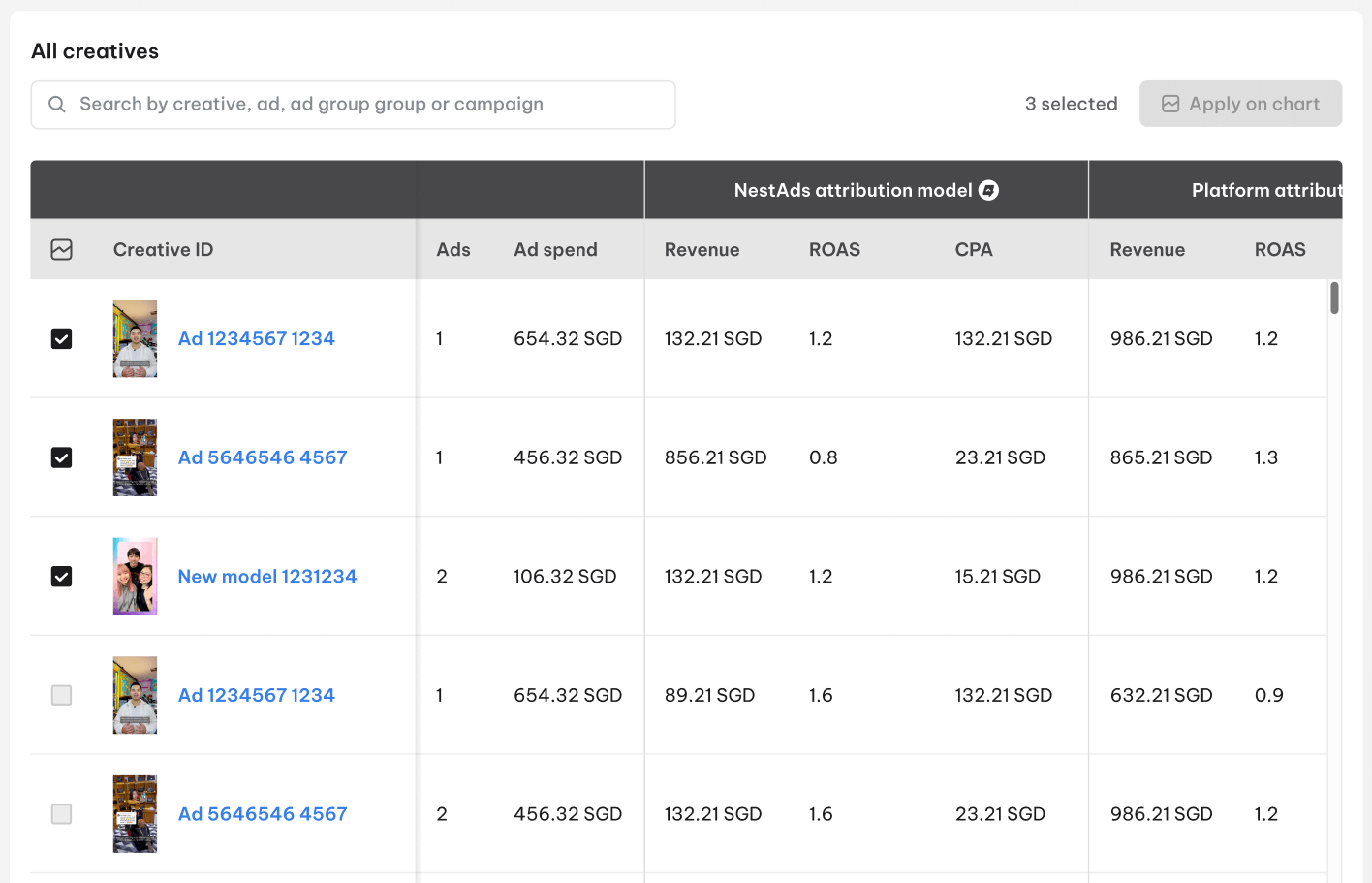
Pick the right audience you want to reach
The next thing we want to discuss when doing A/B testing with your ads is picking the right audience. This is crucial if you want to ensure your results are relevant and applicable to your overall campaign. Your test audience should accurately represent the broader audience you’re targeting. This relevance helps make your insights actionable for optimizing future campaigns.
To achieve this, consider the following key points:
- Audience size: The audience you select for your split tests should be large enough to avoid saturation during the test run. Facebook divides the audience to accommodate all ad variations, so ensure the sample size is sufficient to provide measurable and reliable results without causing delivery issues.
- Use proven audiences for non-audience tests: When testing elements other than audiences, such as creatives or ad copy, utilize an audience that has previously yielded profitable results. This approach ensures that any performance differences are due to the ad variations themselves, not fluctuations in audience behavior.
- Avoid audience overlap: If you use an audience that overlaps with an existing campaign, Facebook’s system might mix up your ads, leading to contaminated results. It’s essential to choose a new audience for your test that is large enough to provide clear insights but distinct from active campaigns to prevent data corruption.
Use data-driven questions and hypotheses
When running A/B tests for your Facebook ads, you aim to determine whether a specific part of your ad performs well and has the potential to convert more for you. However, this question alone isn’t enough; it needs to be data-driven. For instance, if you already have an audience segment aged 18-25 that performs well, your next question should be: If I change to another audience segment, will it gain more or less for me? This question, based on your previous ad data, helps you determine the right things to test without wasting your budget.
The next step is to form your hypothesis. Make sure that it’s measurable. It should be specific, easy to understand, and directly testable. For example, based on your previous question, a hypothesis might be: Running ads for the age segment 25-32 might increase my click-through rate by 20%. This specificity helps you measure success and understand the impact of your changes.
Use an ideal time frame
When setting up your A/B test, Facebook allows you to choose a timeframe of up to 30 days. According to Facebook Business Help Center, a minimum of 7 days is recommended. This timeframe is generally sufficient for the platform’s technology to generate accurate results. However, the exact duration should be tailored to your specific campaign needs and goals.
Avoid making decisions too early, as premature conclusions can lead to inaccurate insights and suboptimal ad performance. By allowing your test to run for a sufficient period, you ensure that the results are robust and reliable, enabling you to make data-driven decisions that truly reflect your audience’s preferences and behaviors.
Conclusion
A/B testing is an invaluable tool for optimizing your Facebook ads. By systematically testing different elements of your ads, you can make data-driven decisions that enhance your campaign performance and maximize your return on investment. Remember to test one variable at a time, choose the right audience, set clear hypotheses, and allocate a sufficient budget and timeframe for your tests. Continuous monitoring will help you stay on track and achieve the best results. Start implementing A/B testing in your Facebook ad strategy today and watch your ad performance soar.
Frequently Asked Questions
How much should my Facebook A/B testing budget be?
The budget for your Facebook A/B testing should be sufficient to achieve statistically significant results without overspending. As a general rule of thumb, allocate at least 10-20% of your overall campaign budget to A/B testing. This allocation allows you to gather enough data to make informed decisions while still preserving most of your budget for the main campaign.
How long should I run an A/B test on Facebook?
The duration of your A/B test depends on your ad spend, audience size, and the speed at which you can gather sufficient data. Facebook recommends running tests for at least 7 days to allow the algorithm to optimize and produce accurate results. However, for more robust insights, consider running your test for one to two weeks, ensuring you capture enough interactions to make your results statistically significant.
How can I stop Facebook ads from the A/B test?
To stop your Facebook ads from an A/B test, follow these steps:
- Go to Experiments: Navigate to the Experiments section in your Facebook Ads Manager.
- Click View results: Select the View results option to see your current tests.
- Select your test: Find the specific test you want to cancel.
- Click the 3 dots icon: Click on the three dots icon next to the test.
- Choose Cancel test: From the dropdown menu, select Cancel test.
This will immediately halt the test and stop your ads from running as part of the A/B test.
Should I use the A/B test tool or set it up through duplication?
The Facebook ads A/B testing tool is a convenient option for testing and determining the metrics for winning ads. However, we recommend manually setting up your A/B tests by duplicating your ads. This approach allows you to control the timing of your tests and avoid automatically halting ads that are performing well. When the A/B testing tool stops your ads, they can lose momentum, making it difficult to achieve previous efficiency levels.
For better control over your A/B tests, run them yourself and monitor them closely. Use tools to track your creative reports in addition to Meta Ads Manager for the most accurate view.




































